2013年08月31日
Art on Ibukijima
I had the good fortune to visit Ibukijima before the start of the summer session of the Setouchi Triennale 2013. I went to observe a workshop by Mikan-gumi and the Sogabe Lab (Kanagawa University).

View from Mikan/Sogabe Lab site
This team of architects and students, led by Masashi Sogabe, has been involved in various experimental architectural projects for the reconstruction of communities devastated by the 2011 tsunami in northeastern Japan. They are applying this experience to the project on Ibukijima, a community that is being rapidly eroded by depopulation and aging. The project is temporarily housed in the unused fish processing plant in the photo below.
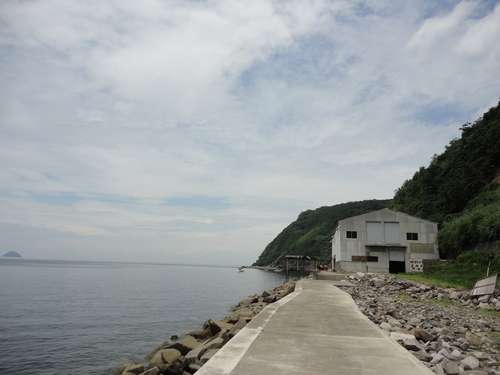
The team’s first step was to walk the entire island and then reproduce it as a model.

Every household was visited and invited to take part in the next step, the collection of memories. At the workshop, islanders shared memories of places that have disappeared,

writing the names of these places on flags
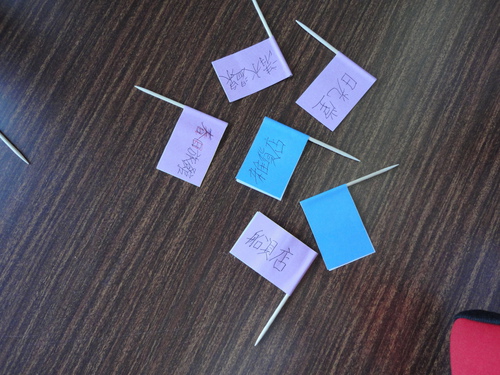
and sticking them in the island.
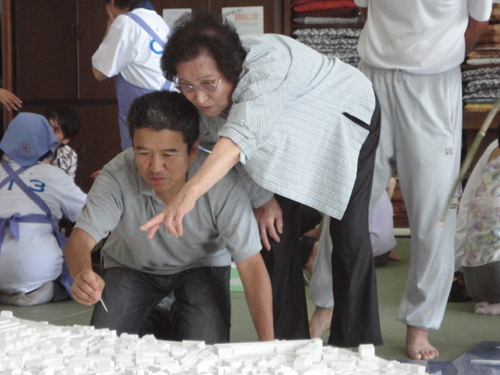
This model was then displayed at the art site, surrounded by blackboards on which further information was added as islanders shared new information.
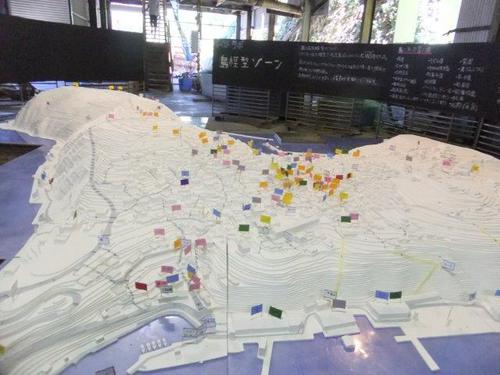
According to Sogabe, the collection of memories is just the preparatory stage. During this process, key people on the island are being identified and encouraged to keep the project moving. The team will continue to visit every 6 months or so as the islanders move on to the next phase of consulting on the island’s future and deciding what they want to save and what they want to let go.
The art site itself also utilized many mementos from the past to furnish the gallery and café.
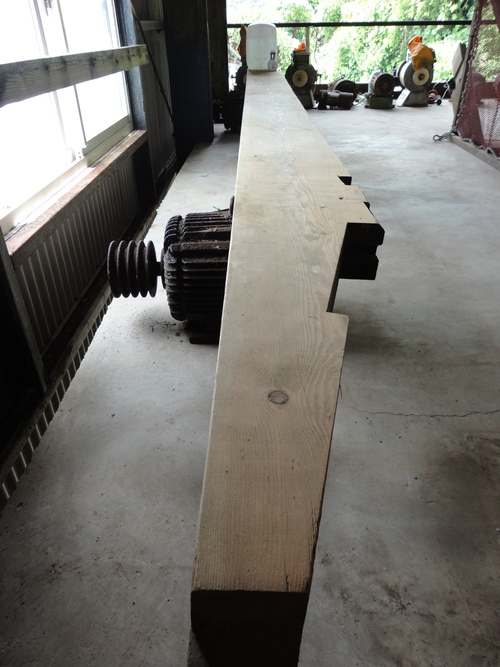

Other Triennale art sites included “Rainbow Hut” at the top of the island. I came across the artist, Tsuneo Sekiguchi, while his project was still in progress.

While making this work, Sekiguchi worked part time on the Ibukijima fishing boats to support himself but also to get to know the islanders. The hut is made of old blankets collected from the village and coated with adobe. Inside, pools of water with prisms catch the light and reflect it on the walls. Unfortunately, I missed seeing these but the very organic looking exterior was still worth the climb up the hill.


Further down the hill is “A Murmur of Small Island” by Taebeom Kim, set in the playground of a defunct nursery school. Kim
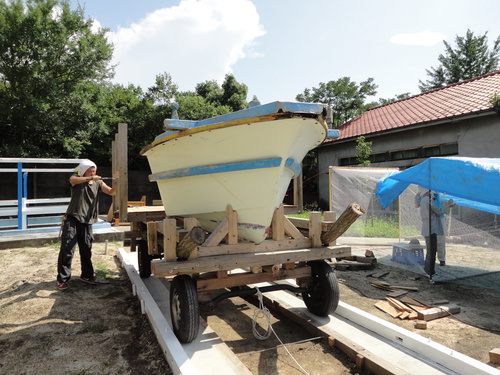
assisted by a team of volunteers,
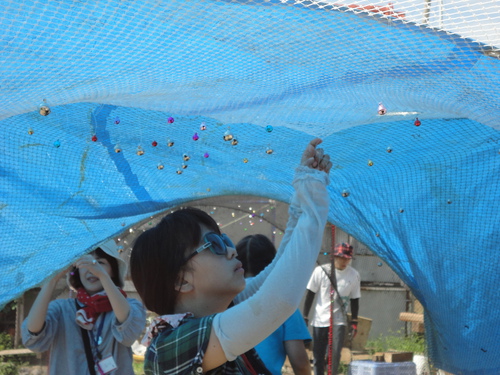
used an old boat and discarded playground equipment to create the fantasy land below.

“Unsinkable Ship” by Ryo Toyofuku & Chiba Art School presented another fantasyland, featuring 50,000 colorful floats made by islanders and Kanonji residents. These were strung through a school building to resemble schools of fish swimming through the sea.

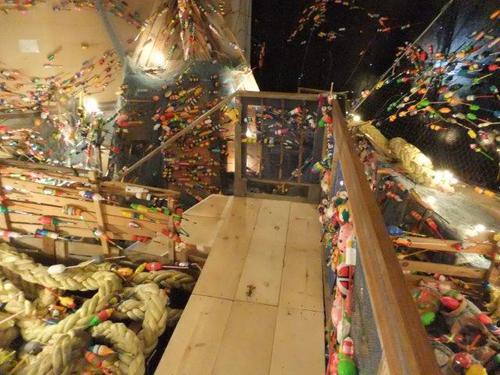
There were more art sites but I am out of space. Let me conclude with “Oiwa Island 2” by Oscar Oiwa. For those who loved Oiwa Island on Ogijima, which burned down in 2010, this work certainly does not disappoint. This time Oscar used his marker magic to create a Setouchi panorama within a huge inflatable dome.

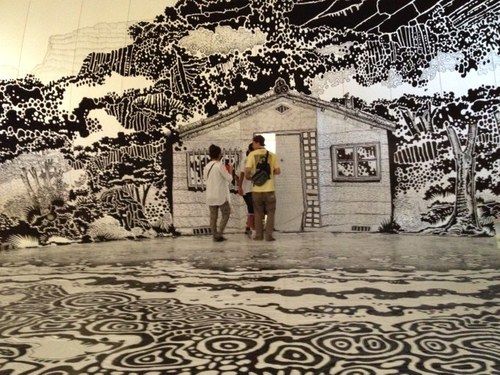
But Oscar really "says" it all and much better in this video of the project in the making:
http://www.youtube.com/watch?v=v99e3Wvp4qE
Although the Triennale on Ibukijima has ended, there is still the Triennale autumn session (Oct. 5 to Nov. 4) with 3 additional islands to look forward to. And, of course, the art sites on many islands will remain open even during the off-season (regular admission fees required). For more info, see: http://setouchi-artfest.jp/
Takamatsu Access:
Takamatsu makes a great base for visiting the Triennale. There are direct flights from Tokyo’s Haneda Airport, as well as from Taiwan, China and Korea, and an express bus link from Kansai International Airport (3 hr). It can also be reached by taking the bullet train to Okayama and changing to the Marine Liner bound for Takamatsu (runs every 1/2 hour; takes 1 hour). For more info see http://wikitravel.org/en/Takamatsu
Many thanks to K. Iwabuchi for helping with this article.

View from Mikan/Sogabe Lab site
This team of architects and students, led by Masashi Sogabe, has been involved in various experimental architectural projects for the reconstruction of communities devastated by the 2011 tsunami in northeastern Japan. They are applying this experience to the project on Ibukijima, a community that is being rapidly eroded by depopulation and aging. The project is temporarily housed in the unused fish processing plant in the photo below.

The team’s first step was to walk the entire island and then reproduce it as a model.

Every household was visited and invited to take part in the next step, the collection of memories. At the workshop, islanders shared memories of places that have disappeared,

writing the names of these places on flags

and sticking them in the island.

This model was then displayed at the art site, surrounded by blackboards on which further information was added as islanders shared new information.

According to Sogabe, the collection of memories is just the preparatory stage. During this process, key people on the island are being identified and encouraged to keep the project moving. The team will continue to visit every 6 months or so as the islanders move on to the next phase of consulting on the island’s future and deciding what they want to save and what they want to let go.
The art site itself also utilized many mementos from the past to furnish the gallery and café.


Other Triennale art sites included “Rainbow Hut” at the top of the island. I came across the artist, Tsuneo Sekiguchi, while his project was still in progress.

While making this work, Sekiguchi worked part time on the Ibukijima fishing boats to support himself but also to get to know the islanders. The hut is made of old blankets collected from the village and coated with adobe. Inside, pools of water with prisms catch the light and reflect it on the walls. Unfortunately, I missed seeing these but the very organic looking exterior was still worth the climb up the hill.


Further down the hill is “A Murmur of Small Island” by Taebeom Kim, set in the playground of a defunct nursery school. Kim

assisted by a team of volunteers,

used an old boat and discarded playground equipment to create the fantasy land below.

“Unsinkable Ship” by Ryo Toyofuku & Chiba Art School presented another fantasyland, featuring 50,000 colorful floats made by islanders and Kanonji residents. These were strung through a school building to resemble schools of fish swimming through the sea.


There were more art sites but I am out of space. Let me conclude with “Oiwa Island 2” by Oscar Oiwa. For those who loved Oiwa Island on Ogijima, which burned down in 2010, this work certainly does not disappoint. This time Oscar used his marker magic to create a Setouchi panorama within a huge inflatable dome.


But Oscar really "says" it all and much better in this video of the project in the making:
http://www.youtube.com/watch?v=v99e3Wvp4qE
Although the Triennale on Ibukijima has ended, there is still the Triennale autumn session (Oct. 5 to Nov. 4) with 3 additional islands to look forward to. And, of course, the art sites on many islands will remain open even during the off-season (regular admission fees required). For more info, see: http://setouchi-artfest.jp/
Takamatsu Access:
Takamatsu makes a great base for visiting the Triennale. There are direct flights from Tokyo’s Haneda Airport, as well as from Taiwan, China and Korea, and an express bus link from Kansai International Airport (3 hr). It can also be reached by taking the bullet train to Okayama and changing to the Marine Liner bound for Takamatsu (runs every 1/2 hour; takes 1 hour). For more info see http://wikitravel.org/en/Takamatsu
Many thanks to K. Iwabuchi for helping with this article.
Posted by cathy at
21:40
│Comments(2)
2013年08月31日
Ibukijima
The Setouchi Triennale summer session ends tomorrow and with it ends the Triennale on Ibukijima, an island about 2 hours travel from Takamatsu. It was the only island that elected to join the Triennale for the summer session alone, and the islanders chose to do so because that is fishing season.

Flotilla of fishing boats ready and waiting
They wanted visitors to see their home when the traditional industry, iriko (anchovy) fishing and processing, was at its peak. Brave souls, these islanders, because the Triennale meant an inundation of visitors and double the work at their busiest, and hottest!, time.

Here I share here a few impressions of Ibukijima.
The first thing that struck me on reaching the island was the number of motor scooters lined up at the port,
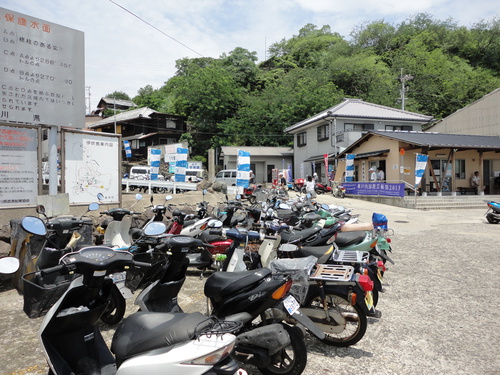
and the second was the fact that many still had the keys stuck in the ignition (obviously there is no escape for scooter thieves from Ibukijima).
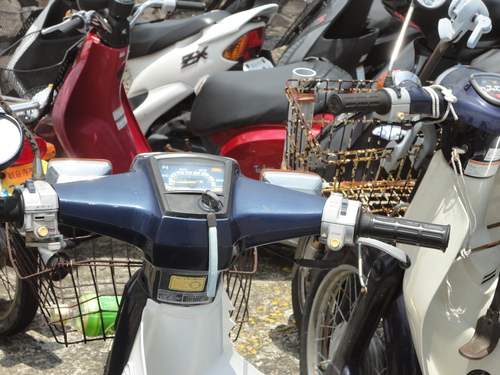
Posters around town urged islanders to wear their helmets during the festival, which suggests that this is not a common practice on the island.
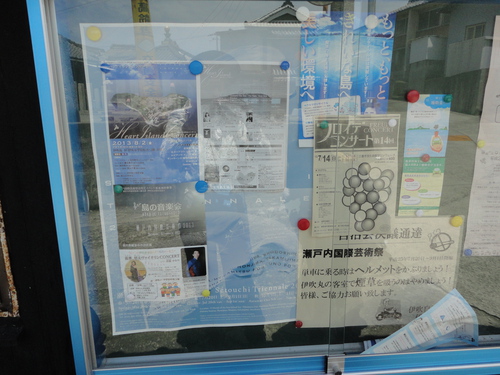
Ibukijima rises steeply out of the sea to form a flat tableland above. The hill that leads through the village is known as shinzo-yaburi or “heart rending hill”, and that is not a metaphor!

It’s not only steep but also very long, so I opted to veer left instead, taking a slightly gentler winding route and then cutting through the village in the middle. The village is a lovely, picturesque community, with many narrow, crisscrossing lanes

lined by lovely individualistic walls.
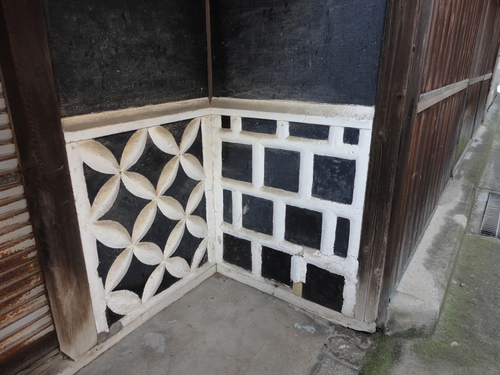
walls

and more walls


A number of walls demonstrated the reason islanders opt for the ubiquitous scooters rather than cars or trucks.
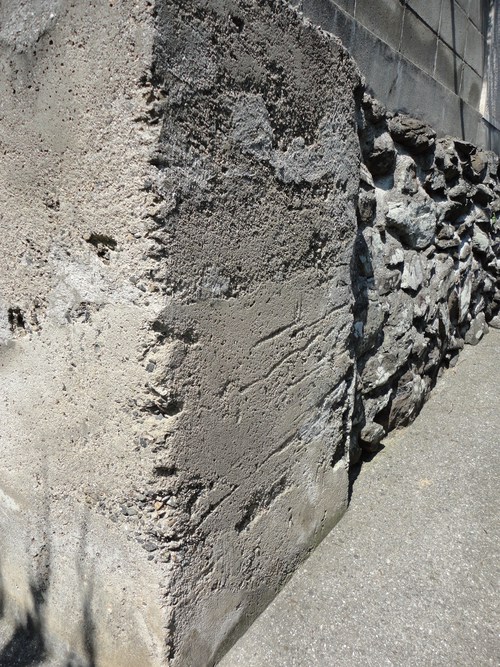
The sign on this wall announces: “Caution! This wall is moving. Be careful not to hit it with your car. If you do, you’ll pay for it.” It looks like quite a few people may have already paid for it.
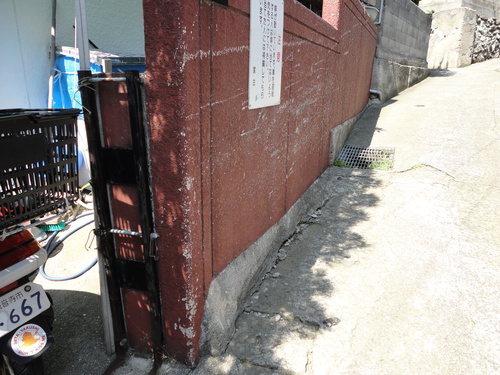
Besides being scenic, Ibukijima is also a very friendly island. Many people stopped to see if I needed help to get around the village or just to chat. One was this graphic designer and island native who currently lives in Okayama.

He is kindly displaying his pilgrim jacket. He had just climbed Mt. Ichizuchi (1,932 meters) in Ehime the day before, and had returned to Ibukijima to pray at Ichizuchi’s sister shrine on the island.
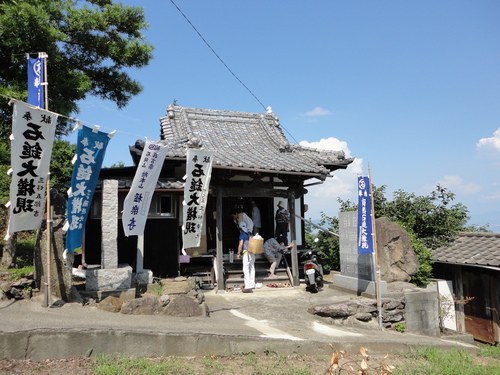
Although it would have helped if this weren’t the hottest summer on record, all of the above coupled with the incredible views from the island, made Ibukijima a great setting for the Setouchi Triennale art sites. (But I will introduce those in my next post.)

Takamatsu Access:
Takamatsu makes a great base for visiting the Triennale. There are direct flights from Tokyo’s Haneda Airport, as well as from Taiwan, China and Korea, and an express bus link from Kansai International Airport (3 hr). It can also be reached by taking the bullet train to Okayama and changing to the Marine Liner bound for Takamatsu (runs every 1/2 hour; takes 1 hour). For more info see http://wikitravel.org/en/Takamatsu
Posted by cathy at
21:16
│Comments(0)



